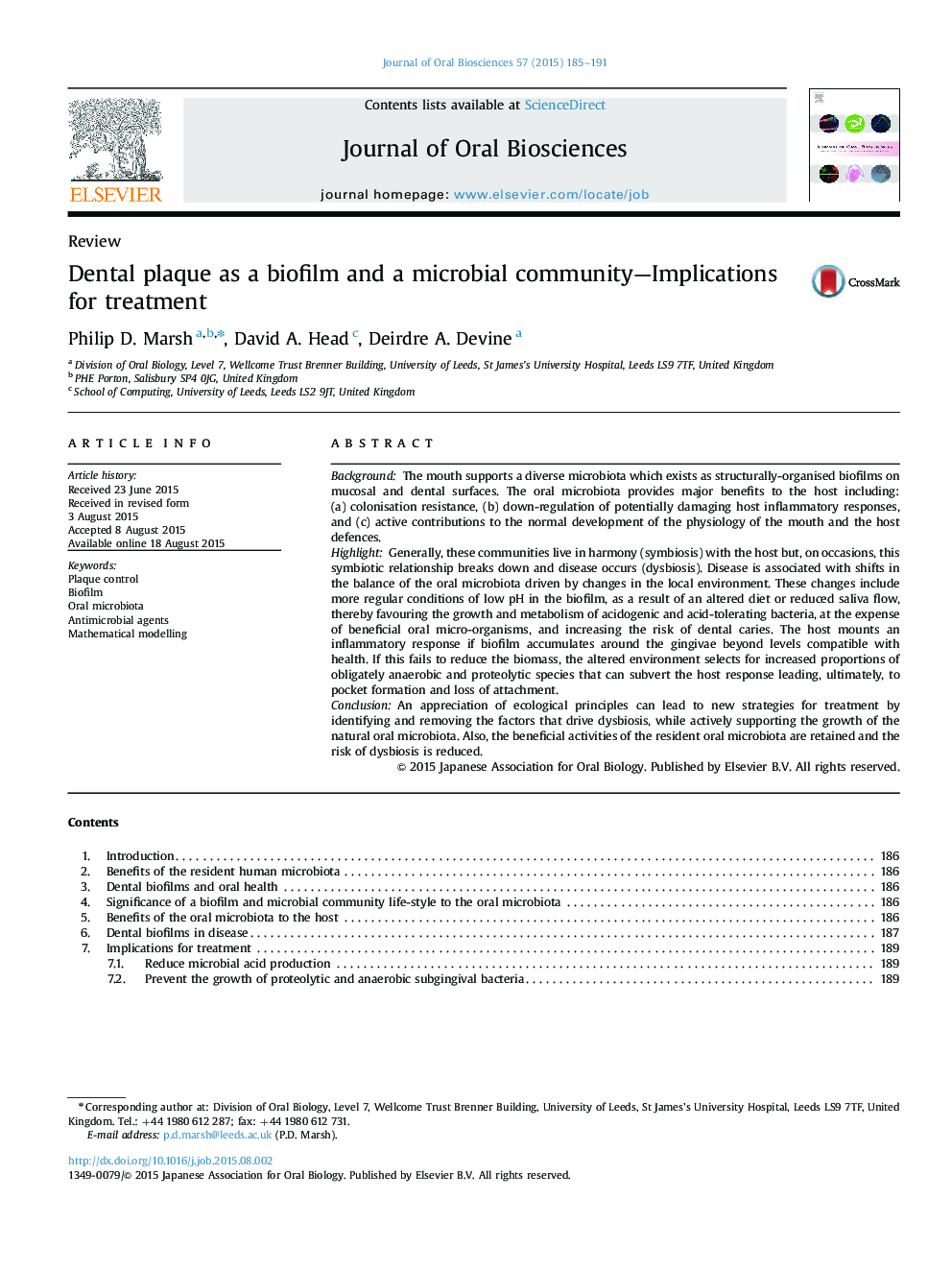| Article ID | Journal | Published Year | Pages | File Type |
|---|---|---|---|---|
| 2776765 | Journal of Oral Biosciences | 2015 | 7 Pages |
BackgroundThe mouth supports a diverse microbiota which exists as structurally-organised biofilms on mucosal and dental surfaces. The oral microbiota provides major benefits to the host including: (a) colonisation resistance, (b) down-regulation of potentially damaging host inflammatory responses, and (c) active contributions to the normal development of the physiology of the mouth and the host defences.HighlightGenerally, these communities live in harmony (symbiosis) with the host but, on occasions, this symbiotic relationship breaks down and disease occurs (dysbiosis). Disease is associated with shifts in the balance of the oral microbiota driven by changes in the local environment. These changes include more regular conditions of low pH in the biofilm, as a result of an altered diet or reduced saliva flow, thereby favouring the growth and metabolism of acidogenic and acid-tolerating bacteria, at the expense of beneficial oral micro-organisms, and increasing the risk of dental caries. The host mounts an inflammatory response if biofilm accumulates around the gingivae beyond levels compatible with health. If this fails to reduce the biomass, the altered environment selects for increased proportions of obligately anaerobic and proteolytic species that can subvert the host response leading, ultimately, to pocket formation and loss of attachment.ConclusionAn appreciation of ecological principles can lead to new strategies for treatment by identifying and removing the factors that drive dysbiosis, while actively supporting the growth of the natural oral microbiota. Also, the beneficial activities of the resident oral microbiota are retained and the risk of dysbiosis is reduced.
